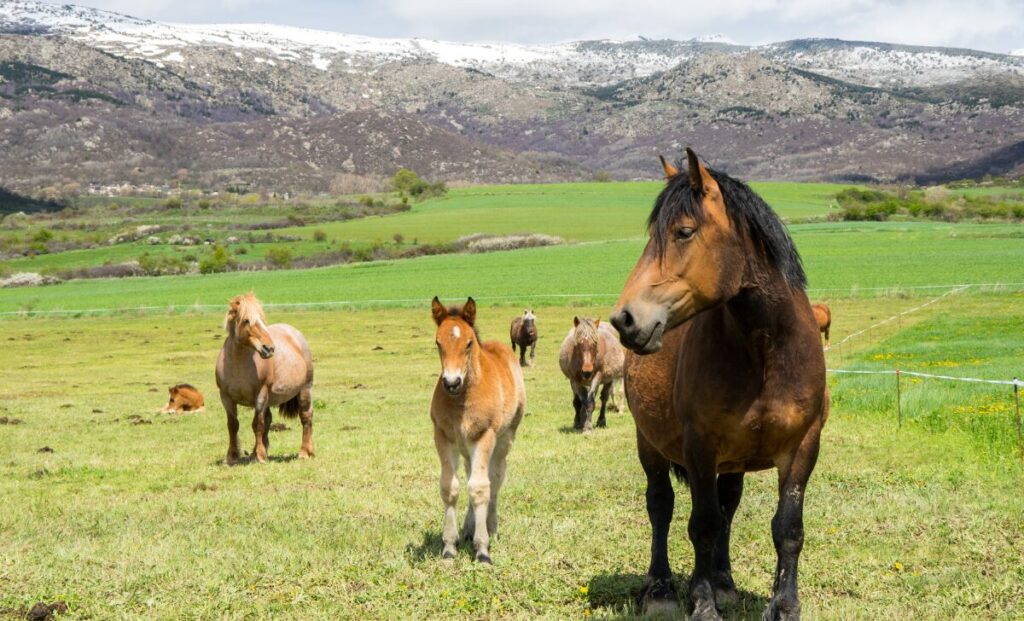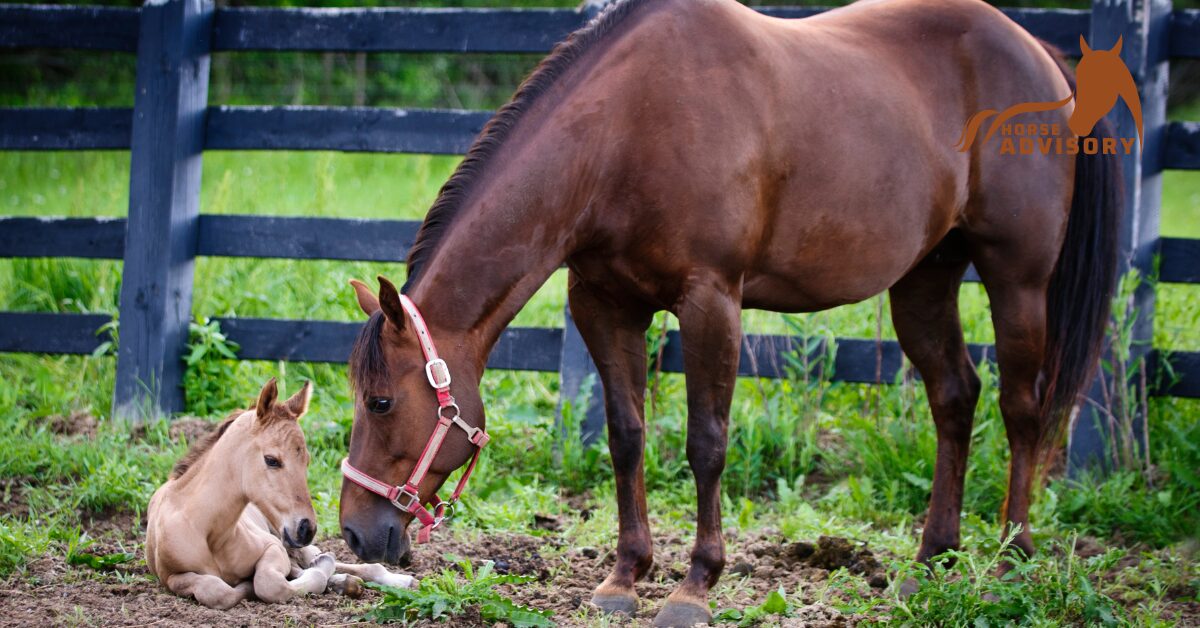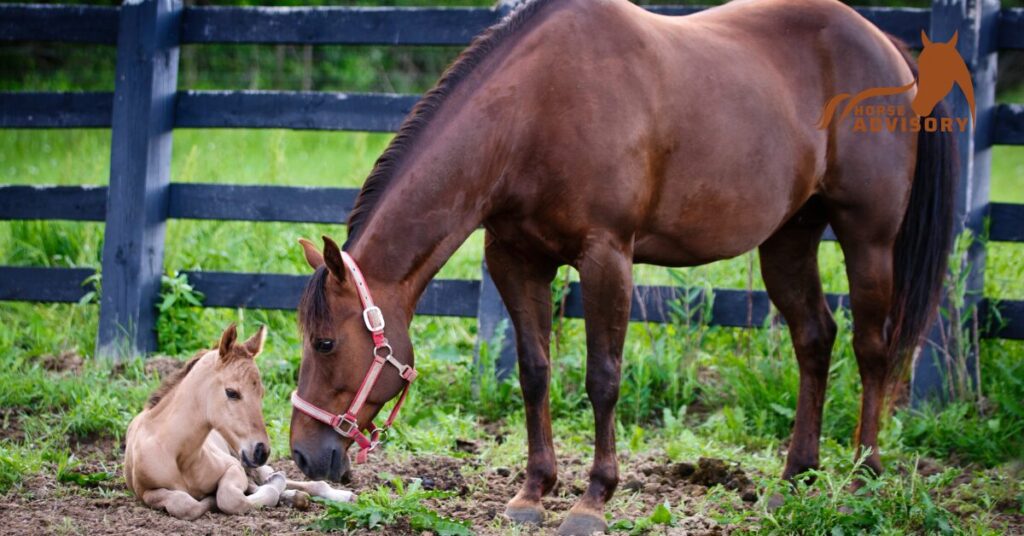The gentle rhythm of hooves, the soft nicker of a mare—there’s an undeniable magic in the air when a horse is expecting. The journey from pregnancy to birth is filled with excitement and anticipation for horse owners and breeders alike. Understanding the intricacies of the foaling process not only enhances our appreciation for nature’s marvel but also plays a vital role in ensuring the well-being of both mare and foal.
Preparing for Foaling
As the anticipation builds and the days inch closer, subtle signs begin to reveal the impending arrival of a new foal. For horse owners, recognizing these cues and adequately preparing for the momentous event are vital steps in ensuring a safe and successful foaling process. From restlessness and behavioral changes to physical indicators like waxing of the udder, each hint serves as a gentle nudge to ready oneself for the miracle of birth.
Recognizing the Signs
- Restlessness and Nesting Behavior: The mare may exhibit restlessness, pawing at the ground, or showing signs of nesting as she prepares to welcome her foal.
- Waxing of the Udder: A sticky, waxy substance on the mare’s teats indicates that labor is approaching.
- Changes in Appetite and Behavior: Observing shifts in appetite, mood, and general behavior can also signal that foaling is imminent.
Creating a Safe Environment
Preparing a tranquil and secure foaling space is paramount to ensure the mare’s comfort and the foal’s safety. Key considerations include:
- Clean Bedding: Providing clean, soft bedding will offer a hygienic and cozy environment for the birthing process.
- Adequate Lighting: Ensuring good lighting in the foaling area facilitates observation and assists in monitoring the progress of labor.
- Easy Observation Access: Setting up the foaling area for easy access and visibility enables you to closely monitor the mare without causing disruption.
Essential Supplies to Have On Hand
Equipping yourself with the necessary tools and supplies can greatly aid in managing the birthing process effectively. Some essential items to have ready include:
- Clean Towels: Used for drying the foal and assisting with cleaning if needed.
- Iodine Solution: Essential for disinfecting and caring for the foal’s umbilical cord post-birth.
- Foal Resuscitator: A critical tool in case immediate assistance is required to help the foal breathe after delivery.
- Foaling Kit: Including items like gloves, lubricant, a flashlight, and emergency contact numbers for your veterinarian.
Monitoring and Assistance
During the foaling process, it’s crucial to maintain a balance of observation and intervention. While most mares give birth naturally and without complications, being prepared to act swiftly in case of emergencies is key.
By paying attention to these subtle signs, creating a conducive environment, and having the necessary supplies at hand, horse owners can approach foaling with confidence and readiness, welcoming the new life entering their world with care, preparation, and love.

The Foaling Process
In the quiet anticipation of new life, the enchanting spectacle of foaling unfolds before us, painting a picture of nature’s profound beauty. Delving into the intricacies of the stages of labor and delivery—from the gentle initiation of contractions to the momentous reveal of the foal’s hooves—holds the key to providing unwavering support when the mare embarks on this transformative journey. Through a tapestry of behaviors, from the rhythmic pawing of the ground to poignant vocalizations, mares eloquently convey their readiness to nurture and guide new life into existence. While the majority of births progress seamlessly, cultivating an awareness of potential complications and knowing precisely when to enlist the aid of a veterinarian can safeguard the well-being and success of both mare and foal.
Embracing Each Stage of Labor and Delivery
- Anticipating the Unveiling of Life: In the hush of expectation, the mare’s gentle cues hint at the imminent arrival of her offspring. Restlessness, subtle shifts in posture, and a quiet intensity mark the delicate prelude to birth.
- Harmony of Contractions: As labor crescendos, contractions weave a symphony of progression, guiding the mare through the cadence of active labor. The orchestrated movements of pawing, circling, and vocal expressions paint a vivid picture of her transition into this sacred dance.
- The Elegance of Waters Breaking: A pivotal moment unfolds as the veil of waters parts, signaling the impending debut of the foal. The amniotic sac emerges, followed by the ethereal sight of the foal’s hooves, marking the entrance into the world with grace and anticipation.
- Birthing New Beginnings: With tender reverence, the mare ushers forth the foal, guided by an instinctual choreography of contractions and maternal care. As the umbilical bond is gently severed, the foal takes its first breath—a poignant ode to life’s perpetual cycle.
- Completing the Circle of Birth: With the foal’s initial steps into the world, the final act unfolds with the passing of the placenta, symbolizing the fulsome completion of this miraculous journey.
Beholden to the Mare’s Communicative Gestures
- Prelude of Preparation: The mare’s delicate symphony of behaviors, from meticulous pawing to contemplative circling, sets the stage for the commencement of the birthing process.
- A Sonnet in Vocalizations: From soft whispers to resounding melodies, the mare’s vocal expressions resonate with the narrative of labor, offering profound insight into her journey towards motherhood.
- Dance of Birth: Restless yet purposeful movements underscore the mare’s dedication to her foal, as she orchestrates the passage of birth with strength and grace.
Safeguarding the Passage
While the natural rhythm of foaling often flows seamlessly, the specter of potential complications such as dystocia, retained placenta, or postpartum concerns necessitates vigilant awareness. Recognizing distress signals and discerning the optimal moment to engage the expertise of a veterinarian can be instrumental in securing the health and vitality of both mare and foal throughout this transformative experience.
Enlisting the Wisdom of Veterinary Care
In moments of uncertainty or deviation from the expected course of foaling, expedient collaboration with a veterinarian stands as a beacon of support. Their specialized insights, professional guidance, and adept interventions serve as a pillar of assurance, ensuring a harmonious voyage through any unforeseen challenges that may arise.
In celebrating the exquisite choreography of birth, interpreting the mare’s nuanced cues, and standing poised to intervene when needed, we honor the timeless spectacle of the foaling process—a testament to life’s enduring miracle and the profound bond between mother and offspring.
Welcoming the New Arrival
In the hushed moments after birth, a world of tender care begins. Immediate post-birth attention is crucial, focusing on drying the foal, encouraging nursing to receive colostrum, and monitoring the mare for any signs of distress. Witnessing the bonding between mare and foal is a poignant reminder of nature’s beauty and resilience. Ensuring the foal receives essential health checks, including a veterinary examination and appropriate vaccinations, sets the foundation for a healthy start in life.
Continuing Care and Development
Beyond the awe-inspiring moment of birth lies a journey of ongoing care and nurture. Addressing the long-term needs of both mare and foal involves maintaining a balanced diet rich in nutrients for lactating mares and promoting steady growth in young foals. Early training and socialization opportunities shape the foal’s future, instilling good manners and confidence that will serve them well in their equine journey.
In the realm of continuing care post-foaling, ensuring that both mare and foal receive the appropriate nutrition is paramount. Lactating mares require a diet tailored to support milk production and overall health. This involves providing high-quality forage, balanced concentrates, and access to clean water to meet their increased nutritional demands during this crucial period. Likewise, young foals benefit from a diet that supports optimal growth and development, emphasizing essential nutrients like protein, vitamins, and minerals to foster healthy bone and muscle formation.
Moreover, investing time and effort into early training and socialization experiences for young foals sets the foundation for their future success. Gentle handling, positive reinforcement, and exposure to various stimuli help build their confidence and develop good manners from an early age. These formative interactions pave the way for a well-adjusted, obedient, and socially adept horse that is poised for a fulfilling equine life.
Breeding Beyond Foaling
Looking ahead, considerations for post-foaling breeding come into focus. Planning for future pregnancies involves strategic decisions around selecting suitable stallions, managing breeding cycles, and ensuring optimal reproductive health for mares. Understanding herd dynamics and individual temperaments plays a key role in fostering harmonious relationships within the herd, creating a conducive environment for breeding and raising foals.
Reflecting on the joys and challenges of raising foals offers valuable insights for refining breeding practices and enhancing the overall well-being of the equine community. Each new generation heralds the continuation of a legacy built on knowledge, care, and a deep love for these magnificent creatures. By embracing the journey of care, training, and breeding beyond foaling, horse owners nurture a legacy of excellence and compassion that resonates through the generations of equine companions to come.
Conclusion
As horse owners embark on the rewarding adventure of welcoming new life into their barns, the journey of foaling unfolds as a testament to the wonders of nature and the bonds that connect us to our equine companions. Embracing the cycle of birth and growth, while continually expanding knowledge and refining practices, ensures that each foal born into the world is met with care, respect, and a commitment to excellence in equine breeding.





